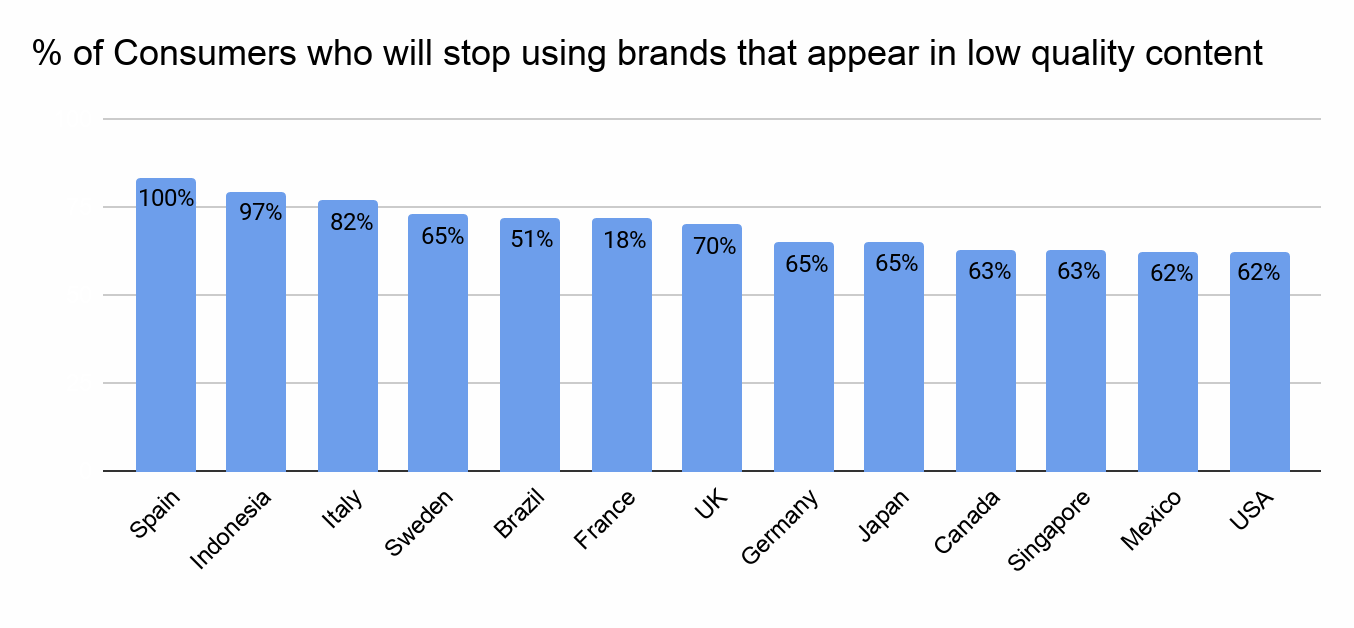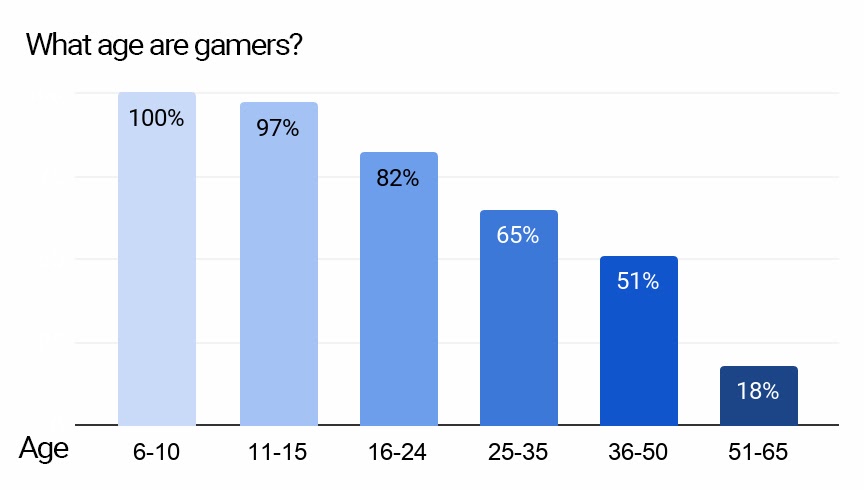Jeremy Taylor, Global Commercial Director at Anzu.io, shares the five ways video games provide a brand suitable environment for advertisers
The IAB Europe Brand Advertising Committee's 2020 industry poll revealed that 77% of brands point to brand safety as a key priority, with 57% of respondents agreeing that it is a more significant concern this year than last year.
This should come as no surprise as marketers have been grappling with balancing their ad placements with consumers' perceptions for the past few years. As 87% of consumers believe brands are responsible for ensuring ads appear in safe environments, advertisers have to be more careful than ever. Reports from Harris and DoubleVerify and CHEQ found that when ads appear next to negative content:
- 66% of consumers are likely to abandon the brand
- People are 4.5 times more likely to believe a brand doesn't care about them
- Perception of the brand’s quality decreases by seven times
- Users are 50% less likely to recommend the brand

With huge repercussions at stake, brands have gone to extreme lengths to protect their ads and reputations. Even with advances in technology, brands still rely on excessive keyword and URL exclusions, creating a binary situation. However, brand safety deserves to be examined with broader considerations that go beyond keyword blocking and further into the realm of contextualisation.
Content that is actually appropriate is aggressively scanned and mismarked as inappropriate if technology fails to consider the context of excluded words. Publishers miss out on monetisation opportunities for high-quality content, and advertisers have drastically reduced the channels they can use, the publishers they can engage with, and, in turn, the reach of their campaigns. When you use a blunt instrument, the results are harsh.
This has led the advertising industry to rethink the concept of brand safety, and two revelations have come to light. The first is that brand suitability offers flexibility that is more aligned with modern times. The second is that advertisers should explore additional channels such as video games, which deliver on the reach and exposure that advertisers desire while providing a completely knowable environment free from user-generated content.
To get all industry players on the same page, the IAB Europe has come up with a standard definition: "Brand suitability describes the practices and tools that are put in place in addition to brand safety controls to ensure that a digital advertising campaign appears against content that is deemed relevant and appropriate for the brand."
To get another perspective on how brand suitability aligns with video games, I spoke with Stevan Randjelovic, GroupM’s Director of Brand Safety and Digital Risk for EMEA. He agreed that video games offer brands access to a broad audience but also cautioned that, “As with any other channel, not all video games are brand-safe or suitable. While the game title itself is not user-generated content, the act of playing, and players’ interaction with other players and the environment, is creating user-generated content. The presence of profanity, shooting, and seldom nudity may render gaming less suitable for some brands. On the other hand, we also have to recognise that the occurrence of these potentially harmful elements happens in the context of entertainment, which makes the suitability element even more pertinent to the discussion.”
Video Games: A Brand Suitable Environment
Although video gaming has been on the rise and worked its way into mainstream entertainment over the past few years, the pandemic has undoubtedly given the industry an unexpected and massive boost. Today, there are 3.4 billion gamers worldwide, and the community is diverse; nearly half of gamers are women and more than 50% of those aged 25-50 play games. The average age of the UK gamer is 28, which might be higher than you thought! In fact, 51% of the 36 to 50s play games, and that number is growing. But different age groups make different choices about how, where, and what they play.

The brand safety and brand suitability issues that advertisers encounter with native advertising and PPC campaigns across publisher platforms do not occur within the video game sector. Coupled with the next-gen technology that now exists in in-game advertising, video games present themselves as a top place for advertisers to run campaigns and positively connect with consumers in a suitable way for each brand.
Let's look at the top five ways video games provide the brand suitability advertisers need to launch campaigns with confidence.
Premium games deliver premium experiences
Brands that advertise on premium publication sites (think Forbes, Washington Post) are naturally viewed as top brands. The same can be said when it comes to advertising in high-quality video games. Popular titles such as League of Legends, Fortnite, and Animal Crossing are considered premium content and have worked their way into everyday life and pop culture.
Game developers painstakingly design every aspect of a game, focusing on stellar graphics and creating the ultimate player experience. Developers don't want to jeopardise their reputation by destroying the playing experience with disruptive or inauthentic advertisements. They take every measure possible to ensure that ads are implemented in a way that doesn't alienate players but enhances the gaming environment.
Comscore's 2020 State of Gaming Report discovered that 41% of console gamers, 37% of PC gamers, and 35% of mobile gamers feel that product placements make games feel more real. Gamers also provided advertisers with insights into how to connect best with them. Over 40% of gamers expect products to be relevant to the game, and 30% expect that ads will be relevant to them specifically. The point: gamers are highly receptive to ad content as long as it's authentic and relevant.
Gaming creates positive moments
Ads that exist alongside positive content and are shown to receptive viewers generate favourable associations. That affection positively influences future purchase intent. Whether venturing out on a solo quest or joining a team to defeat a common enemy, video games are a form of entertainment and deliver positive emotions in spades to highly engaged players. The environment provides a prime opportunity for brands to connect with players and increase brand affinity through positive perceptions.
Contributing further to the feel-good environment is that many games foster a strong sense of community and friendship. During gameplay, gamers converse about strategy and their personal lives, creating a 'third space' similar to social media.
Gaming offers extensive control over ad placements
With such a variety of gaming content available, advertisers can cast a wide net by choosing game genres or opt to place ads in specific games only. And, choice is further defined when it comes to the exact ad placements themselves. Advertisers have granular-level control over where ads are placed in a video game, knowing in advance what the surrounding elements in the environment look like.
They can make real-time decisions about ad placements to increase the connection between emotions and their brands. As players work their way through animated worlds or levels with varying themes, different feelings are elicited. In other types of games, a brand could sponsor an instant replay after a goal or show an ad as a player laps their opponent in a racing game, both moments of joy.
Gaming is a closed environment
Video games are a closed environment that can't be manipulated or host uncontrolled, unmoderated gamer-generated content. Game developers are entirely transparent about the game content, and advertisers can explore any ad placements they feel will be beneficial, as discussed above.
Gaming offers diverse content
Whereas publisher sites tend to attract an audience with specific demographics, players of any game are less homogeneous, providing the perfect gateway to reach diverse consumers. Top game categories include strategy (League of Legends), role-playing (World of Warcraft), action (Call of Duty), sports (Madden NFL 21), and simulation games (Animal Crossing), so there's content that matches every brand's values.
If you assume that older players don't enjoy first-person shooter video games as much as younger generations, you'd be wrong. The Silver Snipers, a Lenovo-backed team of seniors competing for a title in esports tournaments for Counter-Strike: Global Offensive, prove this.
There has been a lot of talk in both the gaming and advertising industries about whether violence in gaming affects brand suitability, particularly as shooter games are the most popular. When I broached this specific topic with Randjelovic his response was: “The question advertisers should ask themselves is: is it suitable for my brand to appear in the game where a player can shoot others? Does this align with my brand’s values? Again, there is no one-size-fits-all here. A brand that prides itself on family values may not find this suitable, but a brand operating with a different set of values might think differently.”
A final thought...
An advertising approach that focuses on brand suitability ushers in a new thinking pattern for brands. How brands choose to apply these guidelines to their campaigns is entirely up to them and will vary by brand.
However, what is clear is that video games provide the controllable, brand-suitable environment that advertisers need without the complications associated with other types of outlets and platforms. When considering the targeting capabilities that exist within video games, the ability for precise ad placements, and the varied demographics of players, there is hardly a platform or other source of entertainment that can rival gaming.
A version of this article was first published on NewDigitalAge in November, 2020.
Posted on: Friday 9 April 2021